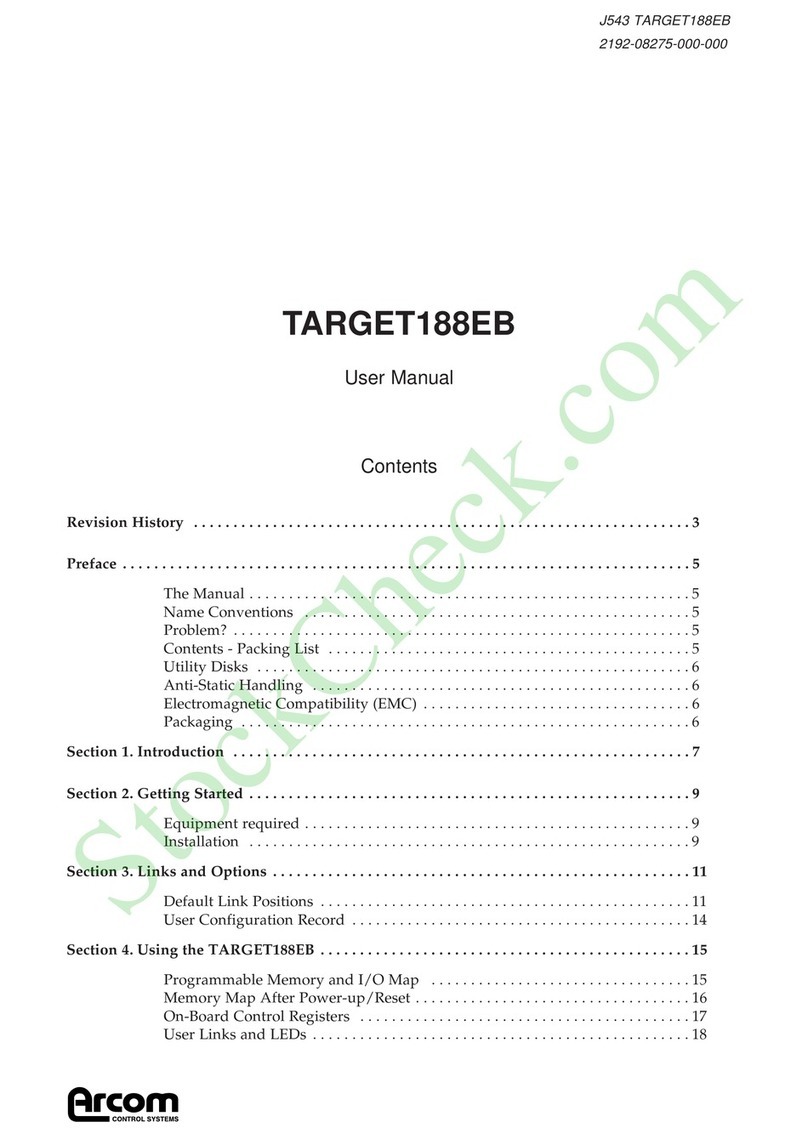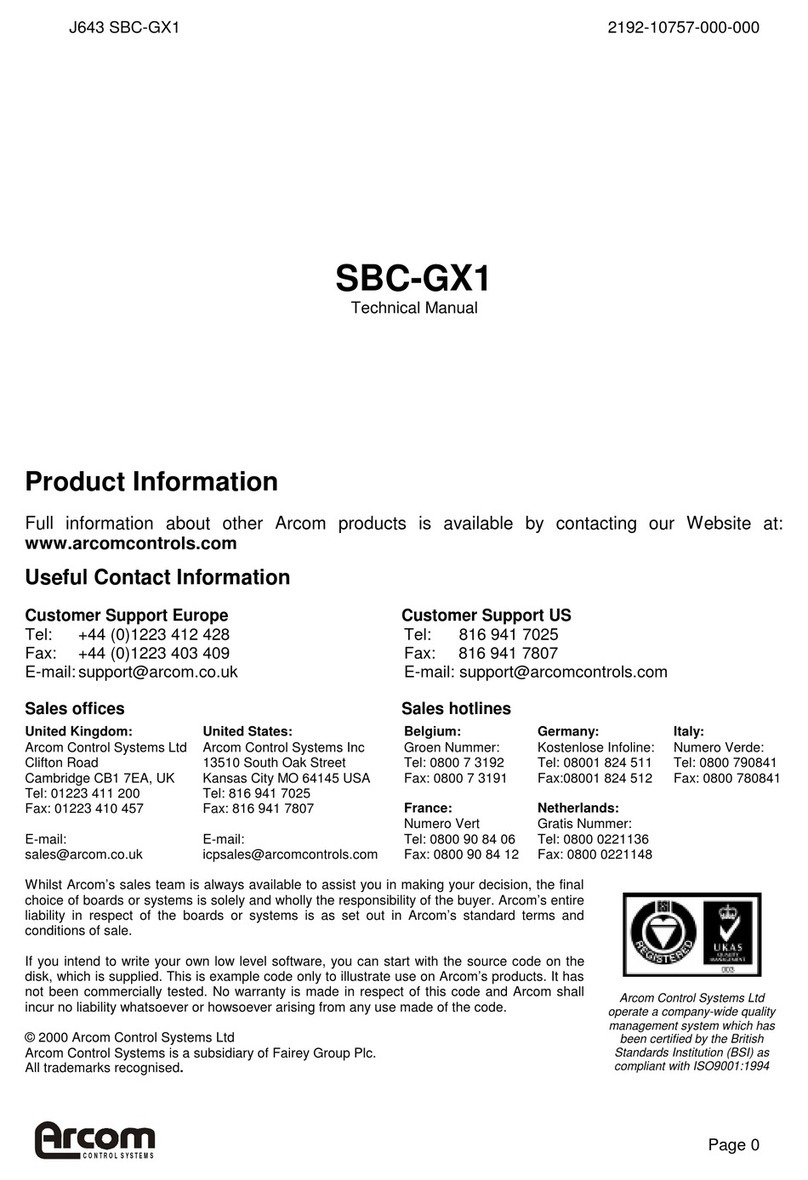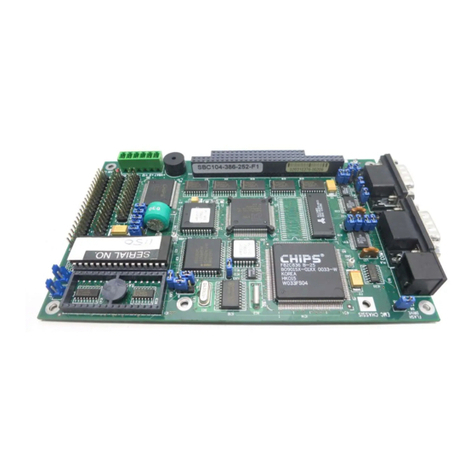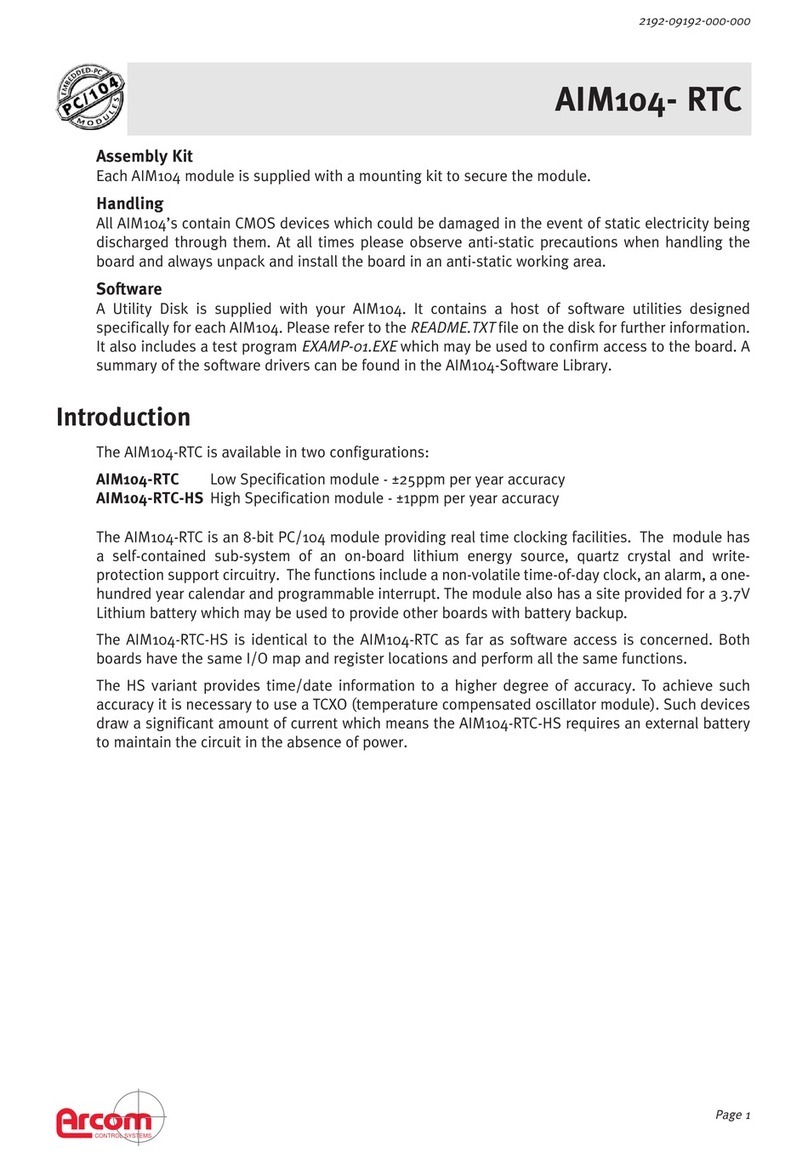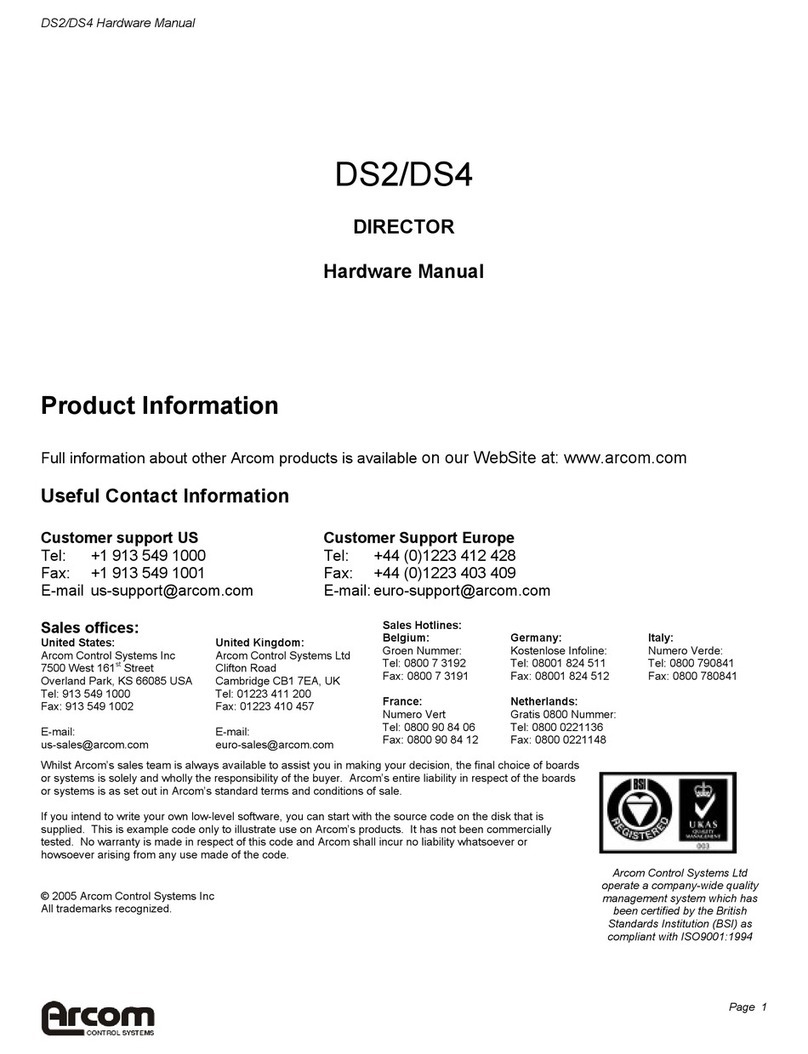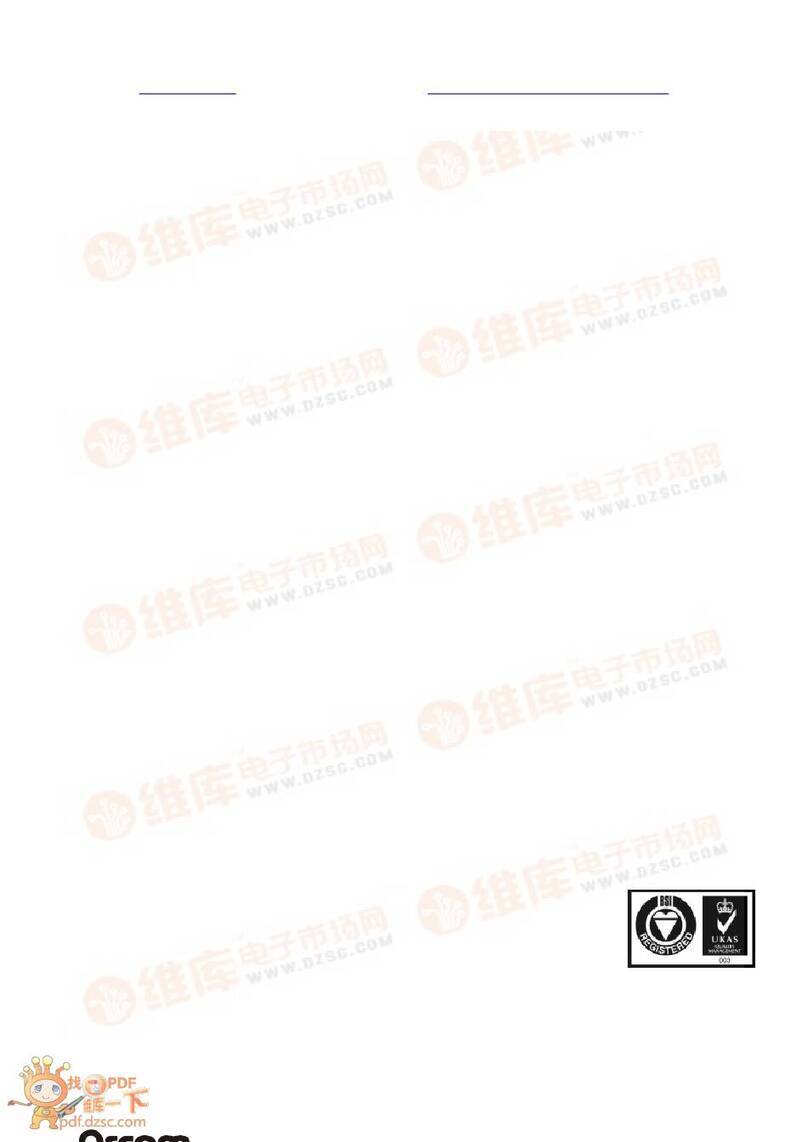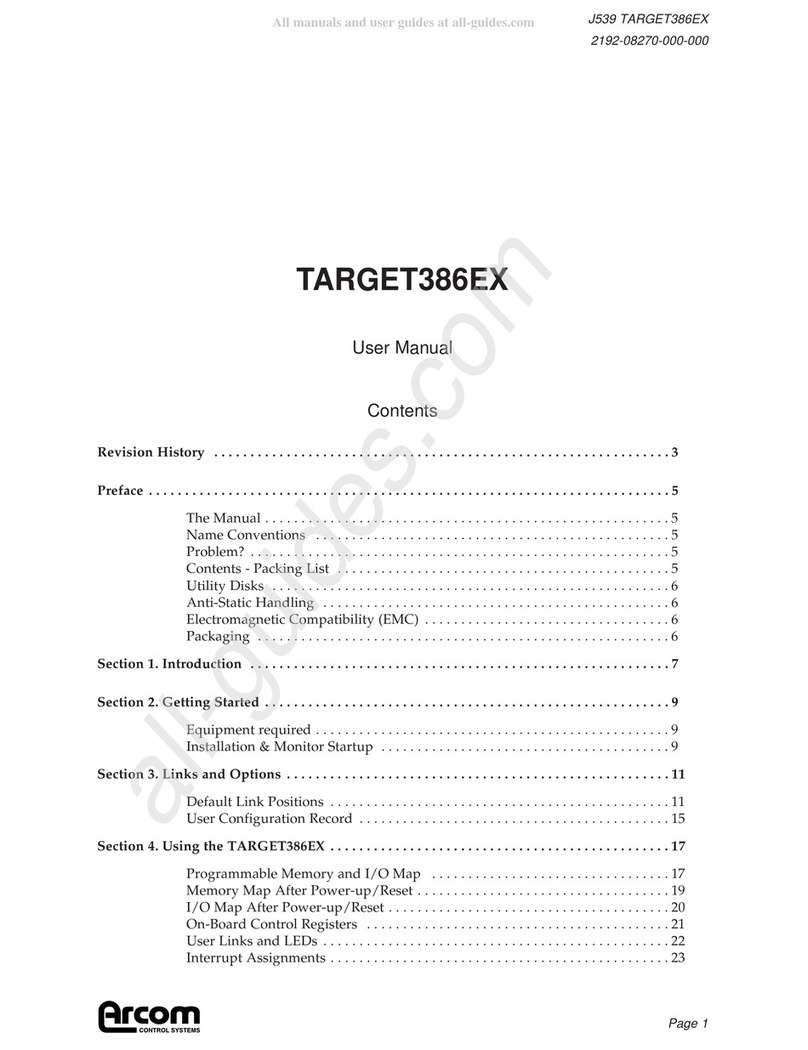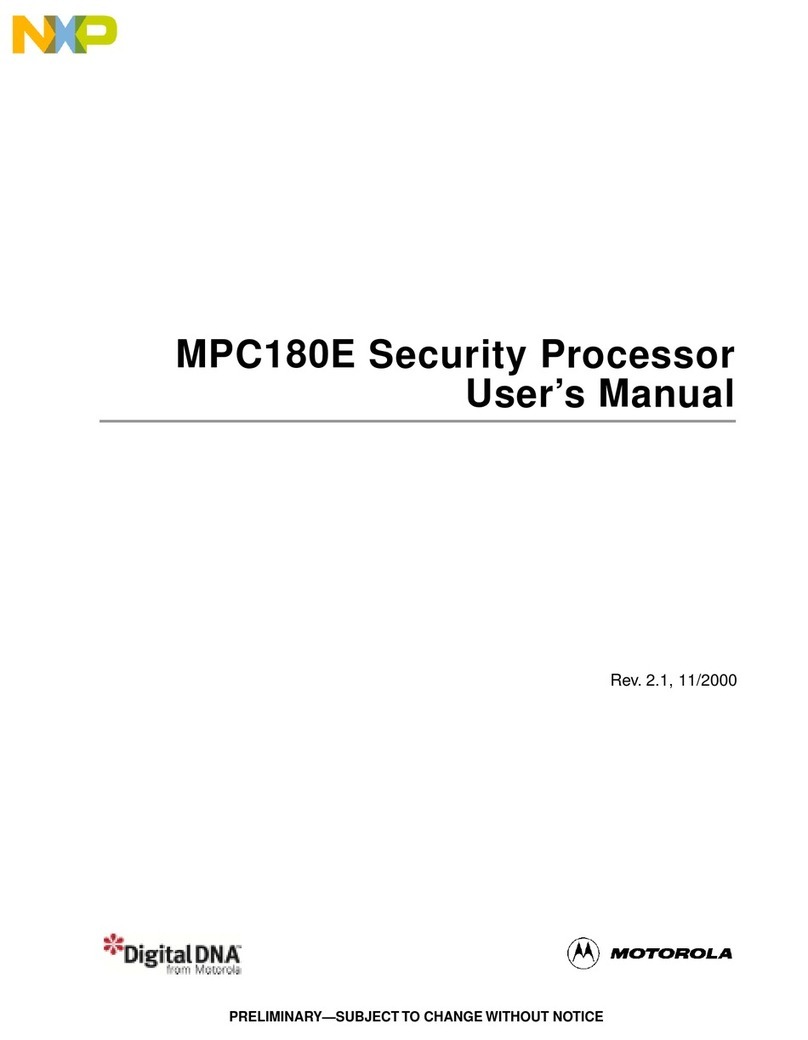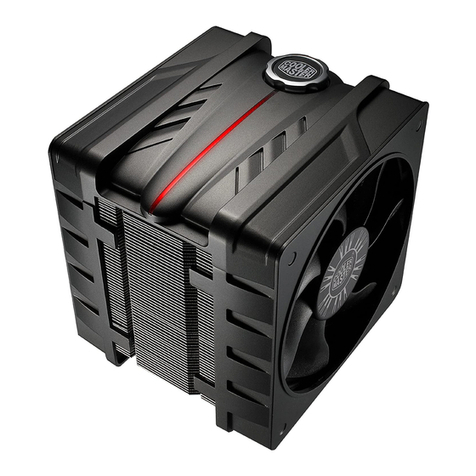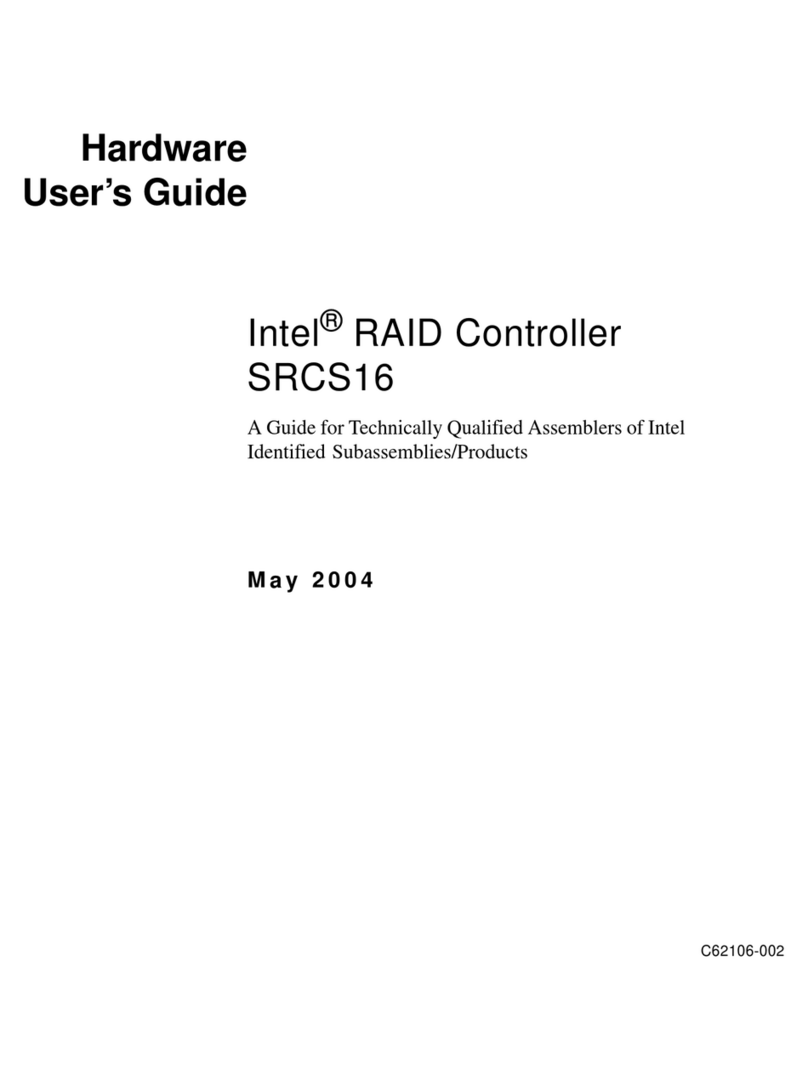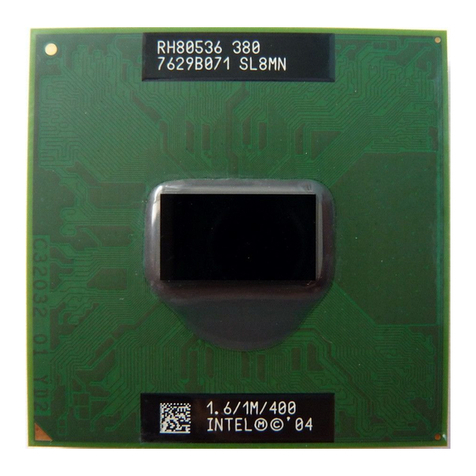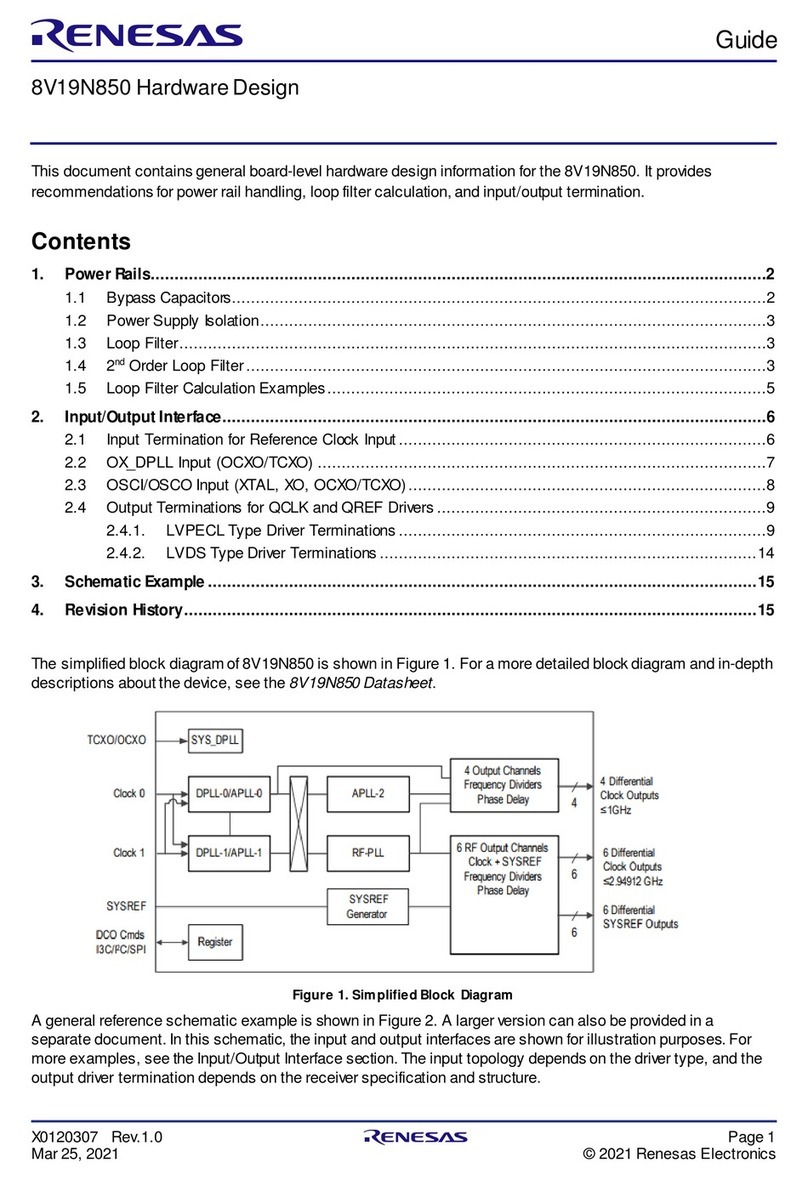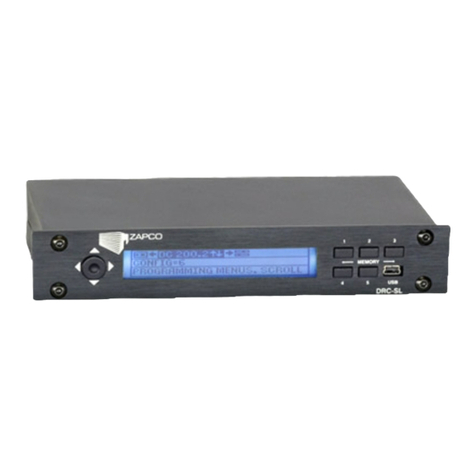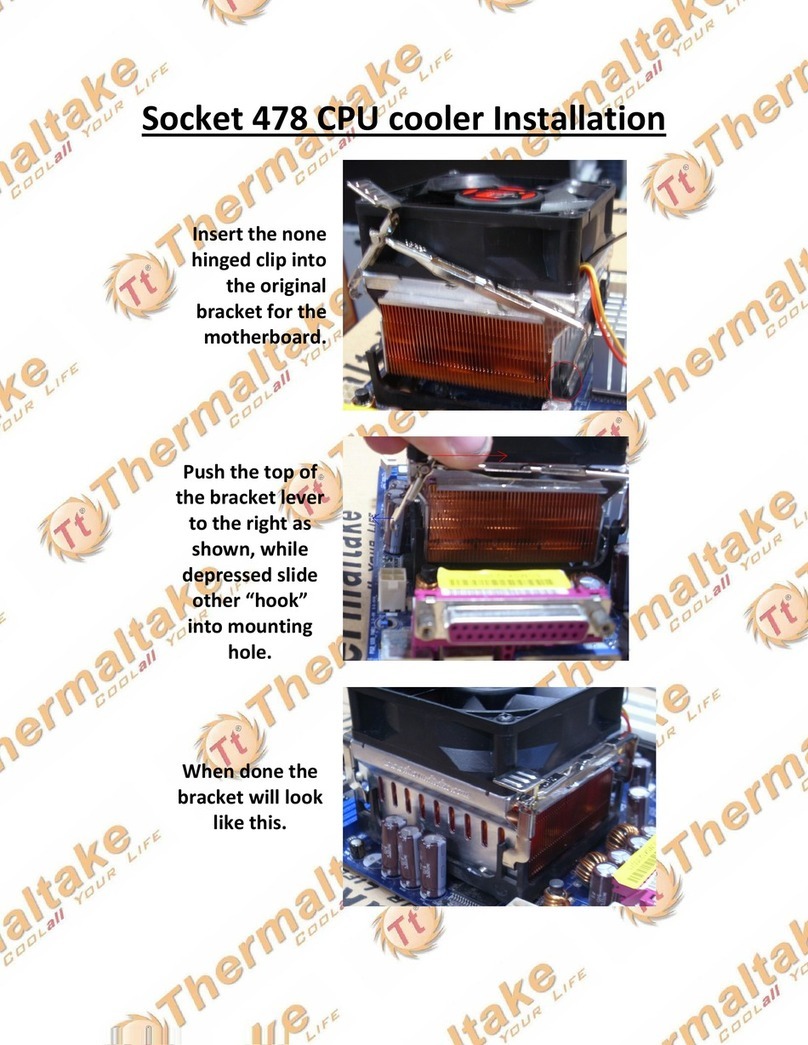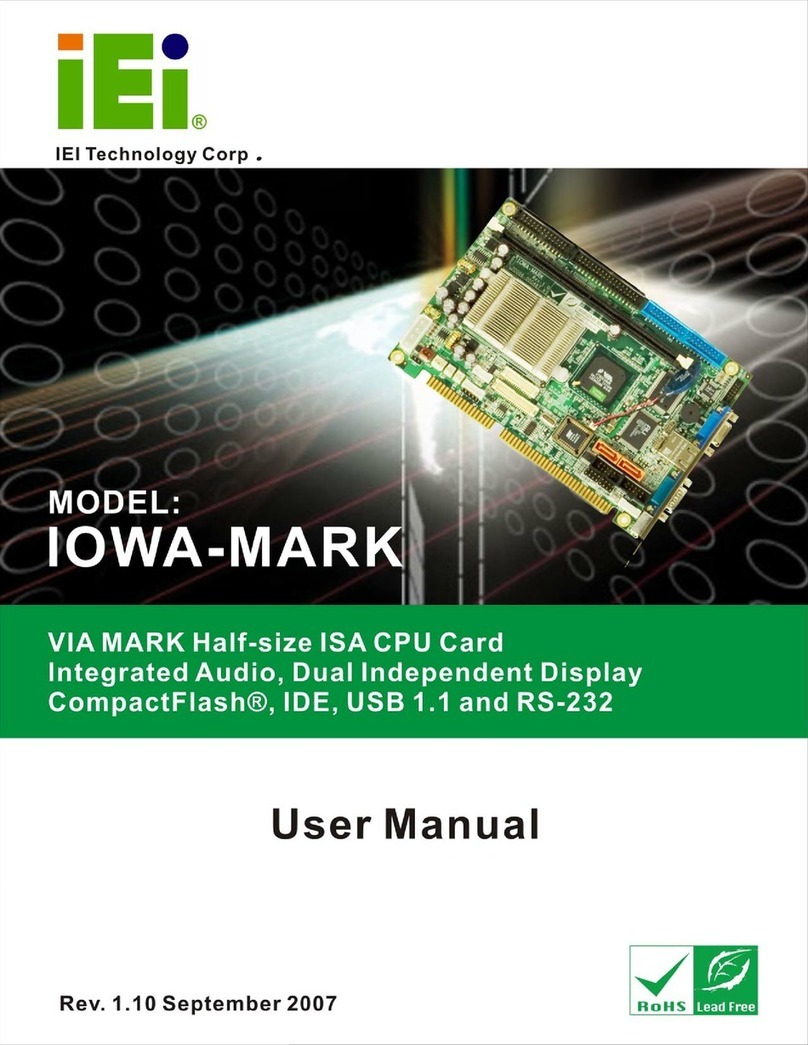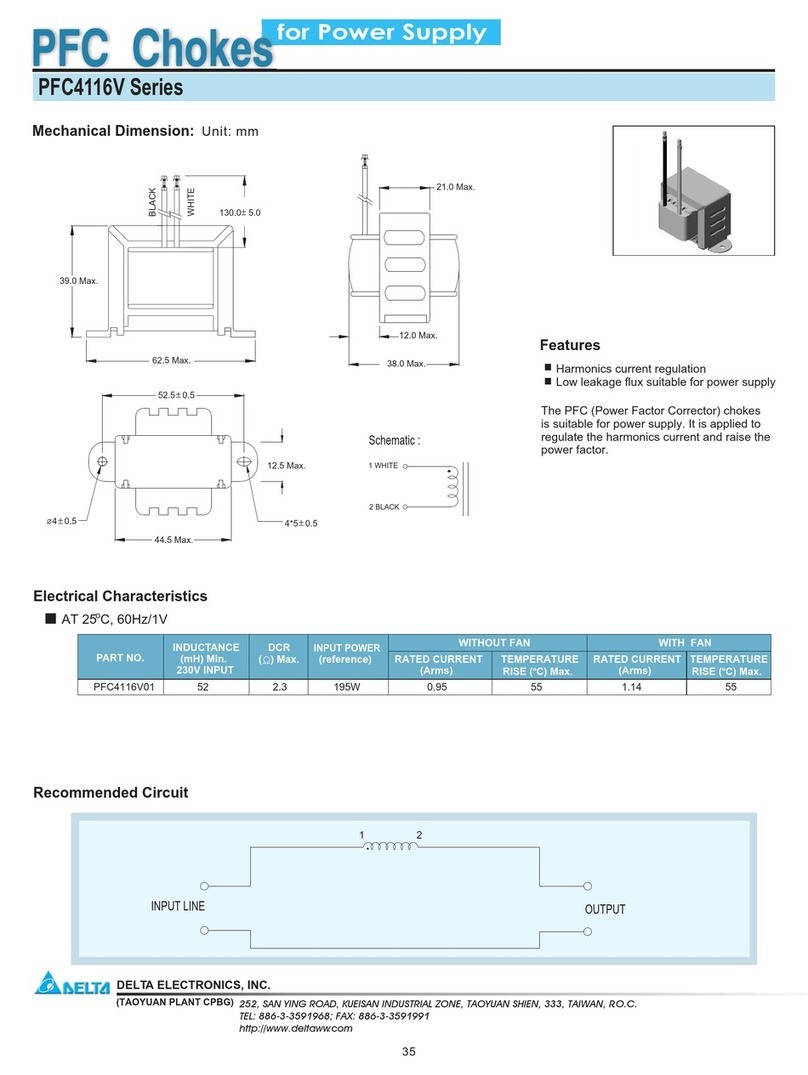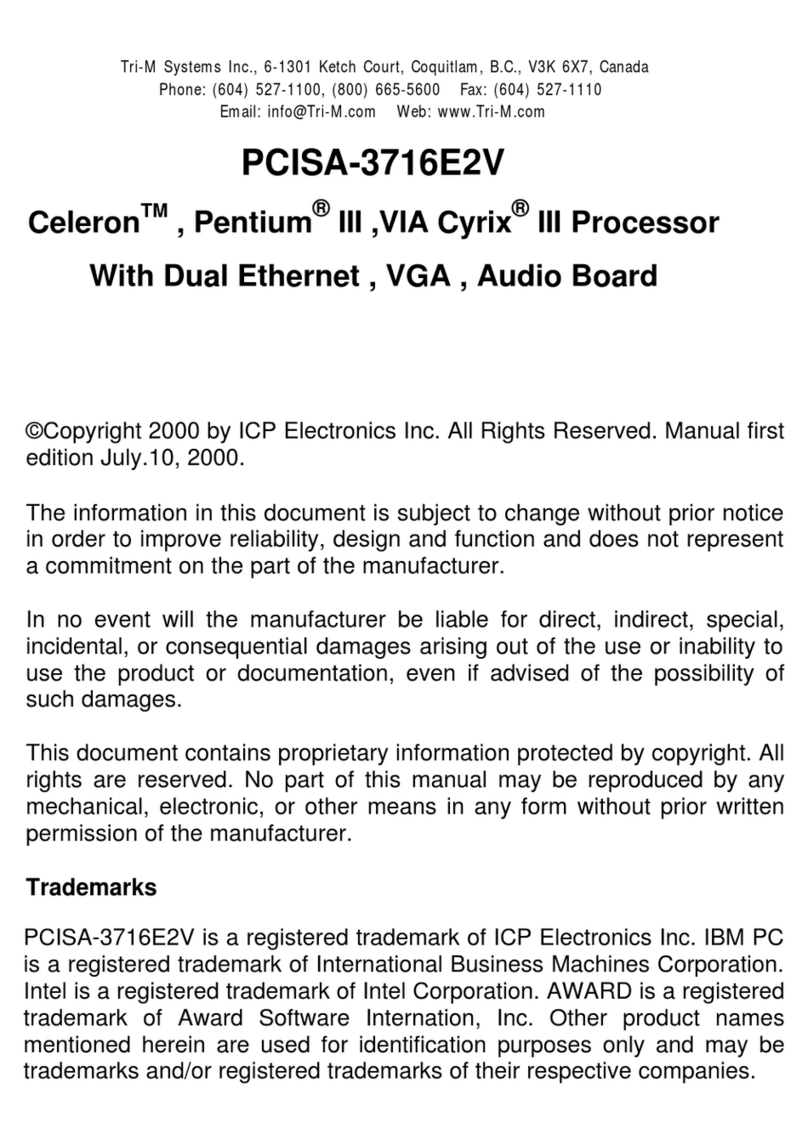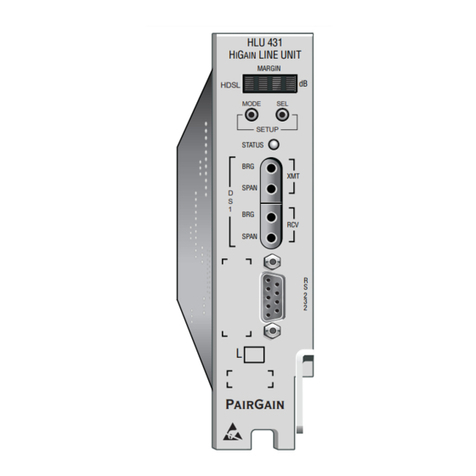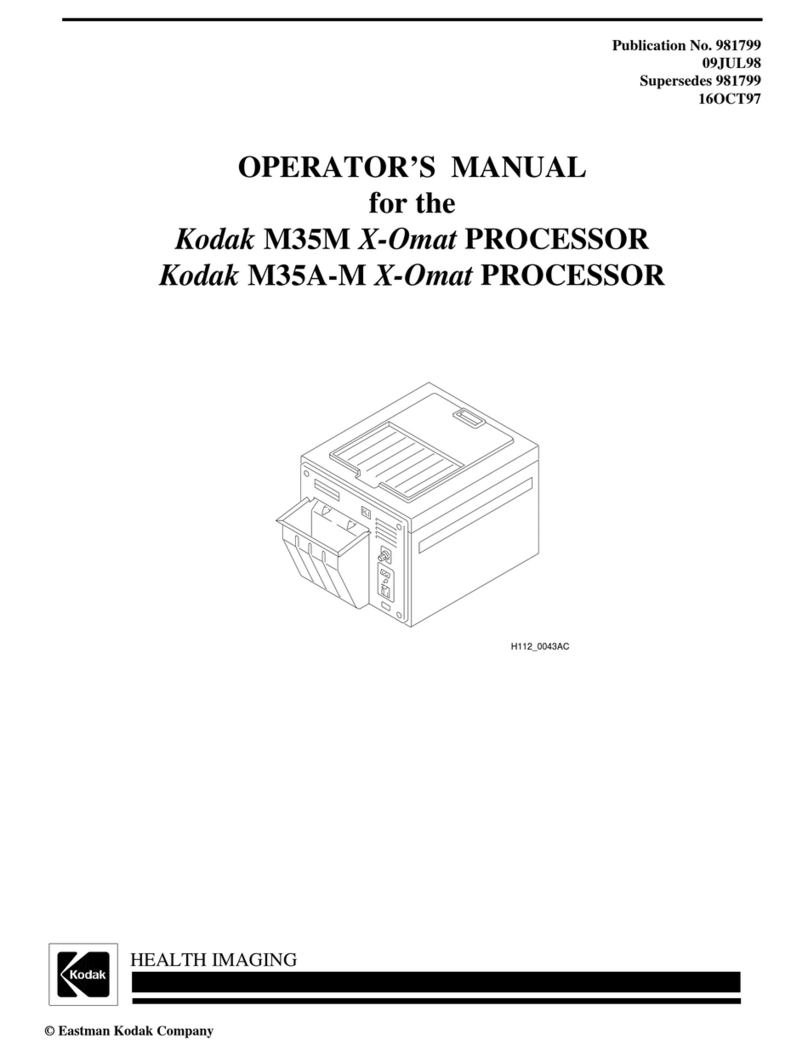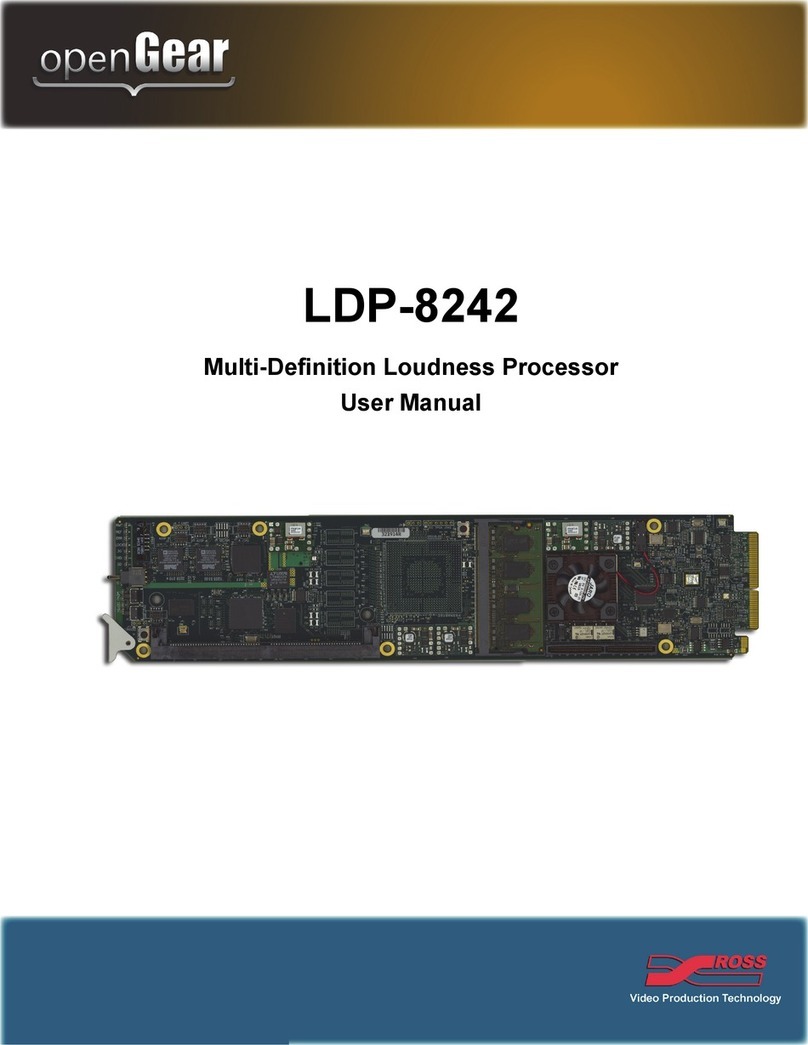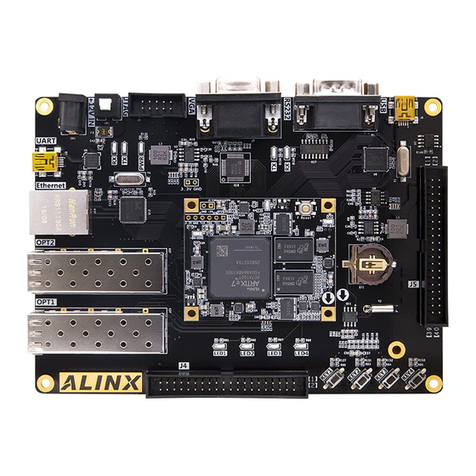Arcom PCIB40 User manual

Revision . . . . . . . . . . . . . . . . . . . . . . . . . . . . . . . . . . . . . . . . . . . . . . . . . . . . . . . . . . . . . . . . . . . . . . . . 2
Preface: . . . . . . . . . . . . . . . . . . . . . . . . . . . . . . . . . . . . . . . . . . . . . . . . . . . . . . . . . . . . . . . . . . . . . . . . . 2
Packing list . . . . . . . . . . . . . . . . . . . . . . . . . . . . . . . . . . . . . . . . . . . . . . . . . . . . . . . . . . . . . . . . . 2
Utility Disk . . . . . . . . . . . . . . . . . . . . . . . . . . . . . . . . . . . . . . . . . . . . . . . . . . . . . . . . . . . . . . . . . . 2
Handling (ESD/Packaging) . . . . . . . . . . . . . . . . . . . . . . . . . . . . . . . . . . . . . . . . . . . . . . . . . . . . . 2
Contacting Arcom . . . . . . . . . . . . . . . . . . . . . . . . . . . . . . . . . . . . . . . . . . . . . . . . . . . . . . . . . . . . . . . . . 2
Introduction . . . . . . . . . . . . . . . . . . . . . . . . . . . . . . . . . . . . . . . . . . . . . . . . . . . . . . . . . . . . . . . . . . . . . . 3
Features . . . . . . . . . . . . . . . . . . . . . . . . . . . . . . . . . . . . . . . . . . . . . . . . . . . . . . . . . . . . . . . . . . . 3
Getting Started . . . . . . . . . . . . . . . . . . . . . . . . . . . . . . . . . . . . . . . . . . . . . . . . . . . . . . . . . . . . . . 3
Operation . . . . . . . . . . . . . . . . . . . . . . . . . . . . . . . . . . . . . . . . . . . . . . . . . . . . . . . . . . . . . . . . . . . . . . . . 4
I/O Map . . . . . . . . . . . . . . . . . . . . . . . . . . . . . . . . . . . . . . . . . . . . . . . . . . . . . . . . . . . . . . . . . . . 5
I/O Function Registers . . . . . . . . . . . . . . . . . . . . . . . . . . . . . . . . . . . . . . . . . . . . . . . . . . . . . . . . 5
Special Function Registers . . . . . . . . . . . . . . . . . . . . . . . . . . . . . . . . . . . . . . . . . . . . . . . . . . . . . 6
Links . . . . . . . . . . . . . . . . . . . . . . . . . . . . . . . . . . . . . . . . . . . . . . . . . . . . . . . . . . . . . . . . . . . . . . . . . . . 7
Default Link Position Diagram . . . . . . . . . . . . . . . . . . . . . . . . . . . . . . . . . . . . . . . . . . . . . . . . . . . 7
Base Address Select . . . . . . . . . . . . . . . . . . . . . . . . . . . . . . . . . . . . . . . . . . . . . . . . . . . . . . . . . . 7
Power-up Output/State Control . . . . . . . . . . . . . . . . . . . . . . . . . . . . . . . . . . . . . . . . . . . . . . . . . .8
Counter 0 Clock Frequency Select . . . . . . . . . . . . . . . . . . . . . . . . . . . . . . . . . . . . . . . . . . . . . . . 8
Counter 1 and 2 Output Select . . . . . . . . . . . . . . . . . . . . . . . . . . . . . . . . . . . . . . . . . . . . . . . . . .9
User Configuration Record Diagram . . . . . . . . . . . . . . . . . . . . . . . . . . . . . . . . . . . . . . . . . . . . . . 9
Connectors . . . . . . . . . . . . . . . . . . . . . . . . . . . . . . . . . . . . . . . . . . . . . . . . . . . . . . . . . . . . . . . . . . . . . . 10
Installation for CE Compliance . . . . . . . . . . . . . . . . . . . . . . . . . . . . . . . . . . . . . . . . . . . . . . . . . . . . . . . 11
Cable . . . . . . . . . . . . . . . . . . . . . . . . . . . . . . . . . . . . . . . . . . . . . . . . . . . . . . . . . . . . . . . . . . . . . 11
Circuit Diagrams . . . . . . . . . . . . . . . . . . . . . . . . . . . . . . . . . . . . . . . . . . . . . . . . . . . . . . . . . . . . . . . . . . 12
1
2192-09066-000-000J206 PCIB40 Technical Manual
PCIB40
40-Ch Digital I/O & Counter Board
Technical Manual
Contents

2192-09066-000-000
2
J206 PCIB40 Technical Manual
Preface
Packing List
This product is shipped as follows: • Board
• User Manual
• Utility Disk
• PCbus Library Datasheet
If any of the above appear to be missing, please telephone Arcom 01223 411200.
Utility Disk
This product is shipped with a utility disk which contains: • PCbus library Manual
• Source Code for all PCbus I/O boards
• A test program called TEXT.EXE
Handling
This board contains CMOS devices which could be damaged in the event of static electricity being discharged
through them. At all times please observe anti-static precautions when handling the board and always unpack
and install the board in an anti-static working area.
Please ensure that should a board need to be returned to Arcom, it is adequately packed and if a battery is
fitted, that it is isolated.
Product Information
Full information about other Arcom Products is available via the Fax on Demand System, (Telephone
Numbers are listed below), or by contacting our WebSite in the UK at: www.arcom.co.uk, or in the US at:
www.arcomcontrols.com
Useful Contact Information
Sales: Tel: +44 (0)1223 411 200 Customer Support: Tel: +44 (0)1223 412 428
Fax: +44 (0)1223 410 457 Fax: +44 (0) 1223 403 400
E-Mail: [email protected]
Manual PCB Comments
Issue A
Issue B
Issue C
V3 I3
V3 I4
V3 I4
960514
970520 [ECO2486]
980119 [ECO2684]
United Kingdom
Arcom Control Systems Ltd
Clifton Road
Cambridge
CB1 4WH. UK
Tel: +44 (0)1223 411200
Fax: +44 (0)1223 410457
FoD: 01223 240 600
United States
Arcom Control Systems Inc
13510 South Oak Street
Kansas City MO 64145, USA
Tel: 888 941 2224
Fax: 826 941 7807
FoD: 800 747 1097
France
Arcom Control Systems
Centre d’affaires SCALDY
23, rue Colbert
78885 SAINT QUENTIN
Cedex, FRANCE
Tel: 0800 90 84 06
Fax: 0800 90 84 12
FoD: 0800 90 23 80
Germany
Kostenlose Infoline:
Tel: 0130 824 511
Fax: 0130 824 512
FoD: 0130 860 449
Belgium
Groen Nummer:
Tel: 0800 7 3192
Fax: 0800 7 3191
Italy
NumeroVerde:
FoD: 1678 73600
Netherlands
Gratis 06 Nummer:
Tel: 06022 11 36
Fax: 06022 11 48
The choice of boards and systems is the responsibility of the buyer, and the use to which they are put cannot be the liability of
Arcom Control Systems Ltd. However, Arcom’s sales team is always available to assist you in making your decision.
© 1996 Arcom Control Systems Ltd.
Arcom Control Systems Ltd is a subsidiary of Fairey Group plc.
Specifications are subject to change without notice and do not form part of any contract.
All trademarks recognised.
Arcom Control Systems Ltd operate a
company-wide quality management
system which has been certified by the
British Standards Institution (BSI) as
compliant with ISO9001:1994
Revision History

3
2192-09066-000-000J206 PCIB40 Technical Manual
Introduction
The PCIB40 is an 8-bit ISA bus add-on board providing 40 channels of digital I/O and three 16-bit
counter/timers. The digital I/O is organised into 5 groups of 8 bits. Each I/O channel may be
configured as an input or an output. The board also includes the facility to define the power-
up/reset state of a group of output bits. This is extremely useful in ensuring the safe start-up of a
PC-controlled system. The 3 counter/timers are implemented using the industry-standard 8254
device. One timer can be used as a periodic interrupt generator while the other two timers can be
connected to external signals for frequency measurement and pulse generation.
The D-50 I/O connector conforms to Arcom’s standard Signal Conditioning System (SCS) and may
be used to drive a range of Signal Conditioning Boards (SCB); see Arcom’s PCbus catalogue for
more details.
Features
• CE compliant design
• 40-channel digital I/O
• Three 16-bit counter/timers with max count rate (input and output) 1MHz
• Compact I/O addressing scheme (link selectable base address)
• Link-selectable interrupt options (IRQ2,3,4,5,7)
• Each channel has a current sink capability of 24mA @ 0.45V
and source current of 500µA @ 2.7V
• Bit programmable for input or output
• Group selection of powerup/reset state.
• Board access LED (for all decoded addresses)
• User controlled LED
• 8-bit bus interface
• I/O connector conforms to Arcom Signal Conditioning System (SCS)
• Operating temperature range, +5°C to +55°C
• Power consumption from the host, max 300mA @ +5V
• MTBF: 477,000 hours (using generic figures from MIL-HDBK-217F at ground benign)
Getting Started
• Switch off PC
• Install Board in supplied configuration
• Switch on PC
• Run TEST.EXE (supplied on utility disk)
• An access/user LED should flash. If not check default link configuration. (Page 7)

4
J206 PCIB40 Technical Manual2192-09066-000-000
Operation
Reading or Writing to the Board
Control of the PCIB40 is achieved by writing to a pointer register and then accessing a data
register to read or write the required I/O register. The pointer register need only be written with a
new value if a different register is to be accessed. The board occupies only two bytes of PCbus
I/O space. Each time the board is accessed, the red LED will flash momentarily.
Digital I/O channels
To use a digital channel (or bit) as an output simply write to that channel (or bit). To use a digital
channel (or bit) as an input write a ‘1’ to the channel to initialise . Thereafter a read can be used.
You can configure each digital channel (or bit) as an input or an output but it is advisable to
configure the board in groups. e.g. Group 1,2 & 3 output, Group 4 & 5 input. When an output is set
to ‘0’ (logic low) it is not advisable to attempt to drive the external connection to logic high.
Reading a digital channel, when it is an output, will return the state of the output. This can be useful
if you need to check the status of an output.
Electrical configuration of each digital channel:
Power-up or reset state of outputs
When digital I/O boards are used to control large or crucial items of plant, it is often necessary to
define how the output lines power-up. This is because it can take many seconds to boot an
operating System and run an application program from reset and begin initialising the system.
Each group of eight I/O signals can be selected to be a logical ‘0’, a logical ‘1’ or ‘don’t care’ at
power-up or on reset. This is configured using jumpers (see links section).
To use this feature set the links for the power-up or reset condition required. Then in your code
write to the group registers the output levels required, and finally enable the outputs by writing a
‘1’ to bit 0 of register 90 (hex).
Note: This feature is suited to outputs not inputs. Setting an input to a power-up state of ‘0’ will
require the group register being written with all ‘1’s’ to enable the use of the channels as inputs.
ReadStatus
WriteControl
Data
Power-UpState
A B
FromoutputEnablelatch
Enable
D Q
+5V
4K7
10K
I/OSignal
OutputEnableSoftware/Always
(Commonto8 I/OChannels).
A B
(Common to 8 I/O Channels).

2192-09066-000-000
Counter Timers
The PCIB40 includes three programmable 16-bit counter/timers. Counter 0 may be driven by either
a 10KHz, 100KHz or 1MHz clock and can be used to generate regular interrupts. An interrupt is
generated only when the counter 0 output goes to a ‘1’.
The input and gate control signals of counters 1 and 2 are connected as inputs from the D-50 while
the counter outputs are linkable to the D-50 connector. Counter inputs 1 and 2 may be used for
frequency or pulse measurement and the outputs used for pulse generation. Refer to the link
section and pin assignments table for connection details.
I/O map
The value written to the pointer register is used to select the on-board I/O location to be accessed.
This board occupies two consecutive addresses and has nine I/O function registers and three
special function registers.
The board must be set on an even address boundary. (i.e. 180h, 182h, 200h etc.)
I/O Function Registers
* A copy of the 8254 (71054) data sheet may be obtained from our Customer Support team (Tel: 01223 412 428)
J206 PCIB40 Technical Manual
5
Address
Base (180h) Write Only Pointer Register On-board register
(e.g. 80h)
Base+1 (181H) Read/Write Data Register Data to Read/Write
from/to register
Read/write Register Name Register Function
Pointer Value
(hex)
00 Write
Read
Write
Read
Write
Read
Write
Read
Write
Read
Read/Write
Read/Write
Read/Write
Write
Output Control Latches Group 0 Bit 0-7 0= Output ‘0’
1= Output ‘1’
0= Input ‘0’
1= Input ‘1’
0= Output ‘0’
1= Output ‘1’
0= Input ‘0’
1= Input ‘1’
0= Output ‘0’
1= Output ‘1’
0= Input ‘0’
1= Input ‘1’
0= Output ‘0’
1= Output ‘1’
0= Input ‘0’
1= Input ‘1’
0= Output ‘0’
1= Output ‘1’
0= Input ‘0’
1= Input ‘1’
See data sheet 8254*
See data sheet 8254*
See data sheet 8254*
See data sheet 8254*
Bit 0-7
Bit 0-7
Bit 0-7
Bit 0-7
Bit 0-7
Bit 0-7
Bit 0-7
Bit 0-7
Bit 0-7
Bit 0-7
Bit 0-7
Bit 0-7
Bit 0-7
Status of Group 0
Output Control Latches Group 1
Status of Group 1
Output Control Latches Group 2
Status of Group 2
Output Control Latches Group 3
Status of Group 3
Output Control Latches Group 4
Status of Group 4
Not Used
Counter/timer 0 Access
Counter/timer 1 Access
Counter/timer 2 Access
Counter/Timer Control Word
00
01
01
02
02
03
03
04
04
05 - 0F
10
11
12
13
Read/Write Pointer Name Pointer Bit Functions

2192-09066-000-000 J206 PCIB40 Technical Manual
6
Special Function Registers
The green User LED is controlled by bit 0 when the pointer register is loaded with 80h.The board
identification register can be used to confirm that the board is present in the system and is the
correct board type. Other PCbus I/O boards in Arcom’s range will return a different value.
Read/Write Functions
Pointer BitPointer NamePointer Value
(hex) Write 1=LED ON
0=LED OFF
Bit 0
Only
User LED Control80
Read Always 00
for the PCIB40
Bit 0-7
Board Identification81
Write 0=Disabled
1=Enabled
Bit 0
Only
Output Enable Control90

2192-09066-000-000J206 PCIB40 Technical Manual
7
Links
Throughout this section a ‘+’ indicates a default link.
Default Link Position Diagram
LK23
LK24 LK14
LKA2
LKA3
LKA4
LKA5
LKA6
LKA7
LKA8
LKA9
LKA1
LK13 LK22 LK12 LK21 LK11 LK20 LK10
A B
A B
A B A B A B A B A B A B A B A B
LK1C
LK1A
LK1B
LK3
LK4
IRQ2
IRQ3
IRQ7
IRQ4
IRQ5
Base Address Select
Links LKA1-9
The base address of the PCIB40 is set using the link area shown below:
Note: When a link is fitted the address line is decoded as a ‘1’ and when the link is omitted the
address line is decoded as a ‘0’.
The default address is set to 180h
Link
LKA9 A9
LKA8 A8
LKA7
LKA6
LKA5
LKA4
LKA3
LKA2
LKA1
A7
A6
A5
A4
A3
A2
A1
Address Line
+
+

2192-09066-000-000 J206 PCIB40 Technical Manual
8
Link 1 Counter 0 Clock Frequency Select
The clock input for counter 0 can be connected to an on-board clock generator operating at either
10KHz, 100KHz or 1MHz. This is set using LK1A/B/C.
Links 10-14 Power-Up Output State
These links are used to select the power-up state of the five groups of I/O channels. For more
information see page 4.
Links 20-24 Power-up control
Select whether the output buffer is always enabled or controlled by software. If you are configuring
the board for known boot up state then the group must be software enabled. If link B is fitted the
output state cannot be determined (‘don’t care’ state) at power up or reset.
Link IRQ2-5 & 7 Interrupt select
The output of counter 0 can be used to generate an interrupt on either IRQ 2,3,4,5 or 7.
NOTE: A PC must be configured with only one interrupt source for each interrupt line. Check your
PC configuration before selecting the interrupt signal. If you are not using the interrupt facility, it is
recommended that the jumper is not fitted.
LK20
Position A
Group 0 Outputs enabled by ‘software’
Position B
Group 0 Outputs always enabled after power on/reset
LK21
Position A
Group 1 Outputs enabled by ‘software’
Position B
Group 1 Outputs always enabled after power on/reset
LK22
Position A
Group 2 Outputs enabled by ‘software’
Position B
Group 2 Outputs always enabled after power on/reset
LK23
Position A
Group 3 Outputs enabled by ‘software’
Position B
Group 3 Outputs always enabled after power on/reset
LK24
Position A
Group 4 Outputs enabled by ‘software’
Position B
Group 4 Outputs always enabled after power on/reset
LK1A Clock input = 1MHz
Clock input = 100KHz
Clock input = 10KHz
LK1B
LK1C
IRQ2 Timer interrupt on IRQ2
Timer interrupt on IRQ3
Timer interrupt on IRQ4
Timer interrupt on IRQ5
Timer interrupt on IRQ7
IRQ3
IRQ4
IRQ5
IRQ7
LK10
Position A
for Group 0 outputs set to ‘1’
Position B
for Group 0 outputs reset to ‘0’
LK11
Position A
for Group 1 outputs set to ‘1’
Position B
for Group 1 outputs reset to ‘0’
LK12
Position A
for Group 2 outputs set to ‘1’
Position B
for Group 2 outputs reset to ‘0’
LK13
Position A
for Group 3 outputs set to ‘1’
Position B
for Group 3 outputs reset to ‘0’
LK14
Position A
for Group outputs 4 set to ‘1’
Position B
for Group outputs 4 reset to ‘0’
+
+
+
+
+
+
+
+
+
+
+

2192-09066-000-000
9
J206 PCIB40 Technical Manual
Links 3 & 4 Counter 1 and 2 Output Select
The outputs from counter 1 and 2 can be connected to the D-50 connector using LK4 and 3
respectively.
NOTE: The counter outputs are interfaced to the I/O connector using an inverting open-collector
driver. The output state is therefore the inverse of the counter output state defined in the data
sheet. When using the counter outputs, it is necessary to ensure that the I/O signals for group 2,
bits 0 and 1, are set for input mode by writing ‘1’s to both bits. This avoids the counter output
conflicting with the I/O port output.
User Configuration Record Diagram
LK3 Connects T2 output via inverter buffer, to RC24 (Digital group 2, bit 1)
Connects T1 output via inverter buffer, to RC23 (Digital group 2, bit 0)LK4
LK23
LK24 LK14
LKA2
LKA3
LKA4
LKA5
LKA6
LKA7
LKA8
LKA9
LKA1
LK13 LK22 LK12 LK21 LK11 LK20 LK10
A B
A B
A B A B A B A B A B A B A B A B
LK1C
LK1A
LK1B
LK3
LK4
IRQ2
IRQ3
IRQ7
IRQ4
IRQ5
Link
LKA1
LKA2
LKA3
LKA4
LKA5
LKA6
LKA7
LKA8
LKA9
LK10
LK11
LK12
LK13
LK14
LK20
LK21
LK22
LK23
LK24
LK1A
LK1B
LK1C
LK3
LK4
IRQ2
IRQ3
IRQ4
IRQ5
IRQ3
IRQ7
Default User Link Default User

D-50 Output Connector (PL2) Pin Assignments
The pin assignments are listed with the pin number of the D-50 connector and also the pin number
when a 50-way IDC ribbon cable is connected to the D-50. The pin assignments conform to the
Arcom Signal Conditioning System (SCS) and may be connected to an external Signal
Conditioning Board.
10
J206 PCIB40 Technical Manual2192-09066-000-000
Ribbon Cable No. D-50 Pin No. Function Alternative Function
1 1
34
3
2
4
5
6
7
8
9
10
11
12
13
14
15
18
2
35
19
3
36
20
4
37
21
5
38
22
0V
Counter 1 Output (LK4)
Counter 2 Output (LK3)
Counter 1 Gate Input
Counter 1 Clock Input
Counter 2 Gate Input
Counter 2 Clock Input
0V
Group 0 - Bit 0
Group 0 - Bit 1
Group 0 - Bit 2
Group 0 - Bit 3
Group 0 - Bit 4
Group 0 - Bit 5
Group 0 - Bit 6
Group 0 - Bit 7
0V
Group 4 - Bit 0
Group 1 - Bit 0
Group 1 - Bit 1
Group 1 - Bit 2
16 6 Group 1 - Bit 3
17 39 Group 1 - Bit 4
18 23 Group 1 - Bit 5
19 7 Group 1 - Bit 6
20 40 Group 1 - Bit 7
21 24 0V
22 8 Group 4 - Bit 1
23 41 Group 2 - Bit 0
24 25 Group 2 - Bit 1
25 9 Group 2 - Bit 2
26 42 Group 2 - Bit 3
27 26
10
43
27
11
44
28
12
45
29
13
46
3039
38
37
36
35
34
33
32
31
30
29
28
Group 2 - Bit 4
Group 2 - Bit 5
Group 2 - Bit 6
Group 2 - Bit 7
0V
Group 3 - Bit 0
Group 3 - Bit 1
Group 3 - Bit 2
Group 3 - Bit 3
Group 3 - Bit 4
Group 3 - Bit 5
Group 3 - Bit 6
1440 Group 3 - Bit 7
4741 0V
3142 Group 4 - Bit 3
1543 Group 4 - Bit 4
4844 Group 4 - Bit 5
3245 Group 4 - Bit 6
1646 Group 4 - Bit 7
4947 -12V
3348 +12V
1749 +5V
5050 +5V
Group 4 - Bit 2

Installation for CE Compliance
To maintain compliance with the requirements of the EMC Directive (89/336/EEC), this product
must be correctly installed. The PC in which the board is housed must be CE compliant as
declared by the PC manufacturer. The type of external I/O cable can be chosen according to the
notes below:
1. Remove the cover of the PC observing any additional instructions of the PC manufacturer
2. Locate the board in a spare ISA slot and press gently but firmly into place
3. Ensure that the metal bracket attached to the board is fully seated
4. Fit the bracket clamping screw and firmly tighten this on the bracket
NOTE: Good contact of the bracket to chassis is essential
5. Replace the cover of the PC observing any additional instructions of the PC manufacturer
Cable
Cable length 1Metre or less : Ribbon cable satisfactory
Cable length 1M to 3M : Commercial screened cable gives the protection required
Longer cable or noisy environment : Use fully screened cable with metal backshells
e.g. Arcom CAB50CE
The following standards have been applied to this product:
BS EN50081-1: 1992 Generic Emissions Standard, Residential, Commercial, Light Industry
BS EN50082-1: 1992 Generic Immunity Standard, Residential, Commercial, Light Industry
BS EN55022 : 1995 ITE Emissions, Class B, Limits and Methods
11
2192-09066-000-000J206 PCIB40 Technical Manual

2192-09066-000-000 J206 PCIB40 Technical Manual
12
Circuit Diagrams

2192-09066-000-000J206 PCIB40 Technical Manual
13

2192-09066-000-000
14
J206 PCIB40 Technical Manual

2192-09066-000-000
15
J206 PCIB40 Technical Manual

2192-09066-000-000
16
J206 PCIB40 Technical Manual
Table of contents
Other Arcom Computer Hardware manuals
